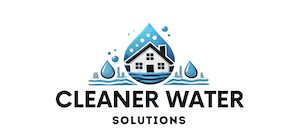When it comes to municipal water treatment, the goal is to ensure that drinking water is free from harmful pathogens and safe for public consumption. To achieve this, most water treatment facilities use disinfectants like chlorine and chloramine to kill bacteria, viruses, and other microbes. While these chemicals are effective at eliminating dangerous contaminants, they can also pose hidden health risks to you and your family.
Ensuring that the water your family drinks is safe is essential. This article will explore how chlorine and chloramine are used in water treatment, the potential health risks associated with these chemicals, and how you can protect your family.
How Chlorine and Chloramine Are Used in Water Treatment
Municipal water systems across the United States have been using chlorine to disinfect drinking water for over a century. Chlorine is added to the water supply in small amounts to kill harmful pathogens like E. coli, Salmonella, and other waterborne microorganisms that can cause serious illness. Chlorine is effective at disinfecting water, but it does have its downsides.
In recent years, more water systems have begun to use chloramine, a combination of chlorine and ammonia, as an alternative to chlorine. Chloramine is a more stable disinfectant, meaning it remains in the water for longer periods, making it a good choice for communities with longer water distribution systems.
While chlorine and chloramine help protect against microbial contamination, they also come with a set of hidden risks.
Chlorine in Drinking Water: The Good and the Bad
Chlorine’s ability to kill bacteria and viruses is its greatest strength, but its presence in drinking water can lead to unintended consequences.
- Disinfection Byproducts (DBPs)
When chlorine is added to water, it reacts with organic matter like leaves, soil, and other natural debris to form disinfection byproducts (DBPs). Two of the most common DBPs are trihalomethanes (THMs) and haloacetic acids (HAAs). Both THMs and HAAs are regulated by the Environmental Protection Agency (EPA) due to their potential health risks.
Health Risks: Studies have shown that long-term exposure to high levels of THMs is associated with an increased risk of cancer, particularly bladder cancer. A study published in Environmental Health Perspectives found that people exposed to high levels of THMs had a higher risk of bladder cancer than those with lower exposure. The EPA limits the concentration of total THMs in drinking water to 80 parts per billion (ppb), but even low levels of DBPs can pose risks over time.
HAAs, another byproduct of chlorine disinfection, have also been linked to increased cancer risk and may affect reproductive health. The EPA has set a maximum allowable limit for HAAs at 60 ppb, but exceeding this level can lead to health complications. - Respiratory Issues and Skin Irritation
Chlorine can also cause respiratory problems when it evaporates from water, particularly during activities like showering or cooking. The inhalation of chlorine fumes, even in small amounts, can irritate the respiratory system, exacerbating conditions like asthma or bronchitis, especially in children.
Additionally, chlorine can have a drying effect on skin and hair. Prolonged exposure to chlorinated water—such as when showering, bathing, or swimming—can lead to dry skin, itchy scalp, and brittle hair. For individuals with pre-existing skin conditions like eczema, chlorine exposure can worsen symptoms.
Chloramine: A Safer Alternative or New Risks?
As more municipalities switch from chlorine to chloramine, many have touted it as a safer and more effective disinfectant. However, chloramine has its own set of concerns. - Formation of Nitrosamines
Chloramine is less likely to form THMs and HAAs than chlorine, but it can lead to the formation of nitrosamines, a class of disinfection byproducts that are considered even more dangerous than THMs. Nitrosamines are potent carcinogens and have been linked to liver, stomach, and bladder cancers.
A study published in the Journal of Environmental Science & Technology found that nitrosamines can form when chloramine reacts with organic materials in the water. Although these byproducts are found in smaller concentrations than THMs, the health risks associated with nitrosamines are significant. - Leaching of Lead from Pipes
One of the lesser-known risks associated with chloramine is its potential to corrode old lead pipes. When chloramine-treated water flows through lead pipes, it can cause lead to leach into the water supply. Lead exposure is especially dangerous for children, as it can cause developmental delays, learning disabilities, and behavioral problems. Even at low levels, lead exposure can have long-term effects on brain development.
A notorious example of this is the Flint, Michigan water crisis, where the use of improperly treated water caused lead from aging pipes to leach into the water supply, affecting the health of thousands of residents, including children. - Chloramine and Aquatic Life
Chloramine is much more stable than chlorine, which means it stays in water longer. However, this stability can also be harmful to aquatic life. Fish and amphibians are highly sensitive to chloramine, and exposure to even small amounts can be fatal. As a result, chloramine-treated water can negatively impact local ecosystems if it enters streams, rivers, or lakes through runoff.
What Does the Research Say About Health Risks?
Numerous studies have explored the health risks associated with chlorine, chloramine, and their byproducts. According to research published in Occupational and Environmental Medicine, long-term exposure to chlorine DBPs like THMs has been associated with an increased risk of bladder cancer. The study found that people exposed to high levels of chlorinated water had a 50% higher risk of developing bladder cancer.
Additionally, the International Journal of Environmental Research and Public Health published findings linking DBPs to reproductive and developmental issues, including lower birth weights and an increased risk of miscarriage.
While more research is needed to fully understand the long-term effects of chloramine, its ability to form dangerous byproducts like nitrosamines and increase lead leaching has raised significant concerns among scientists and public health advocates.
Protecting Your Family from Chlorine and Chloramine
If you’re concerned about the potential risks associated with chlorine or chloramine in your drinking water, there are steps you can take to reduce your exposure: - Test Your Water
Start by testing your water for chlorine, chloramine, and their byproducts. You can purchase a home testing kit or send a water sample to a certified lab for a more comprehensive analysis. If your home has older plumbing, it’s also a good idea to test for lead, especially if your water utility uses chloramine. - Install a Water Filtration System
Water filtration systems can help remove chlorine, chloramine, and their byproducts from your drinking water. Activated carbon filters are particularly effective at reducing chlorine and THMs, while reverse osmosis systems can remove a broader range of contaminants, including nitrosamines and lead.
It’s important to note that not all filters are effective against chloramine. Be sure to choose a filter that is specifically designed to remove chloramine if your municipality uses this disinfectant. - Shower Filters
Since chlorine can evaporate from water during showers and baths, installing a shower filter can help reduce your exposure to chlorine fumes. Shower filters with activated carbon can remove chlorine from the water, helping to protect your skin and respiratory health. - Stay Informed
Stay informed about your local water quality. Water utilities are required to provide annual water quality reports that detail the levels of contaminants in your water supply, including chlorine, chloramine, and their byproducts. If you notice elevated levels of THMs, HAAs, or other disinfection byproducts, consider taking action to protect your household.
Conclusion
While chlorine and chloramine play a critical role in ensuring that our drinking water is free from harmful pathogens, their use also comes with hidden risks. Disinfection byproducts like THMs, HAAs, and nitrosamines can pose serious health risks, including cancer and reproductive issues. Chloramine, though often considered a safer alternative to chlorine, can still lead to lead contamination in homes with older plumbing and negatively impact the environment.
For homeowners, understanding these risks and taking steps to protect your family from excessive exposure to these chemicals is essential. By testing your water and investing in the right filtration systems, you can reduce your exposure to chlorine and chloramine and ensure that your drinking water is as safe as possible.
For those looking to improve the safety of their drinking water, Cleaner Water Solutions offers free water testing and personalized filtration solutions. Contact us today to find out how we can help you protect your family from the hidden dangers of chlorine and chloramine in your water.



